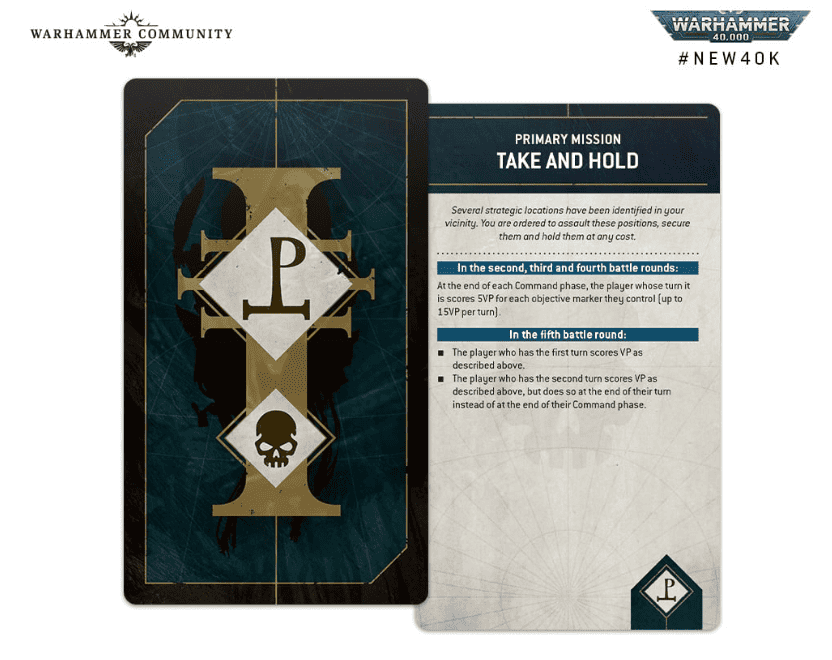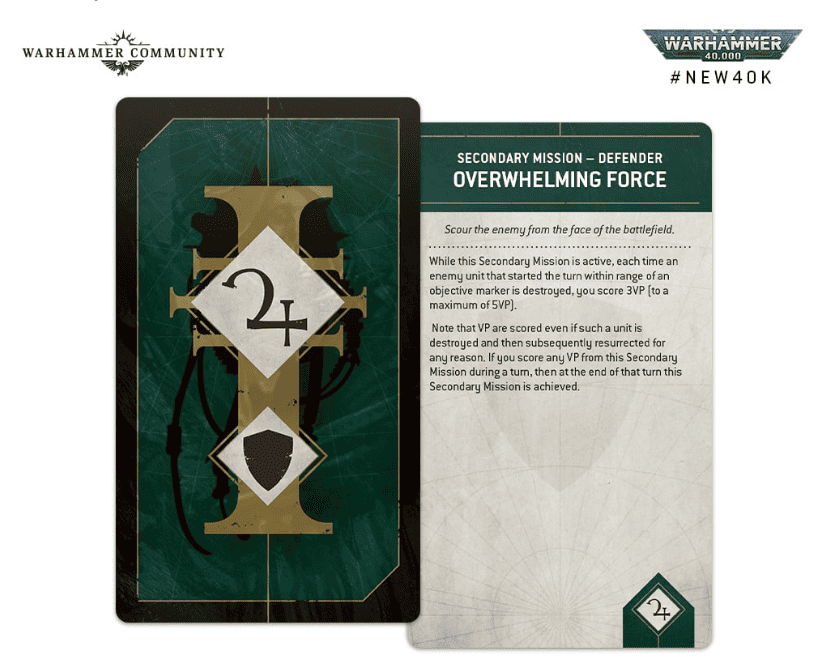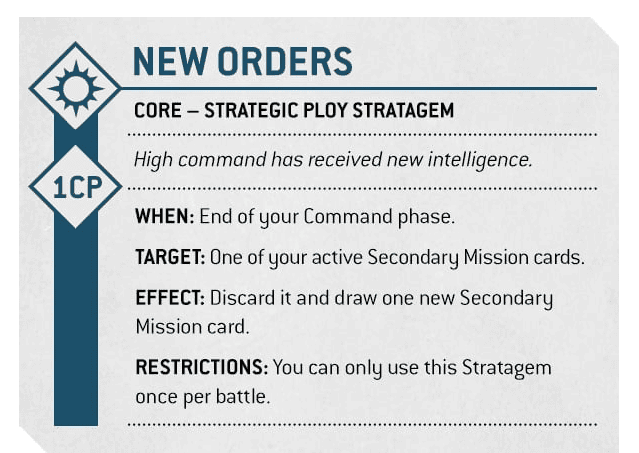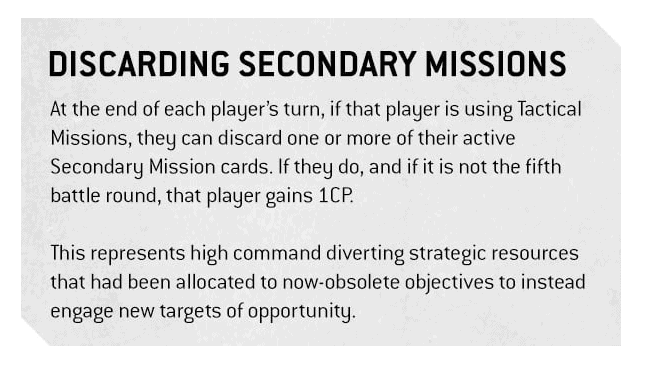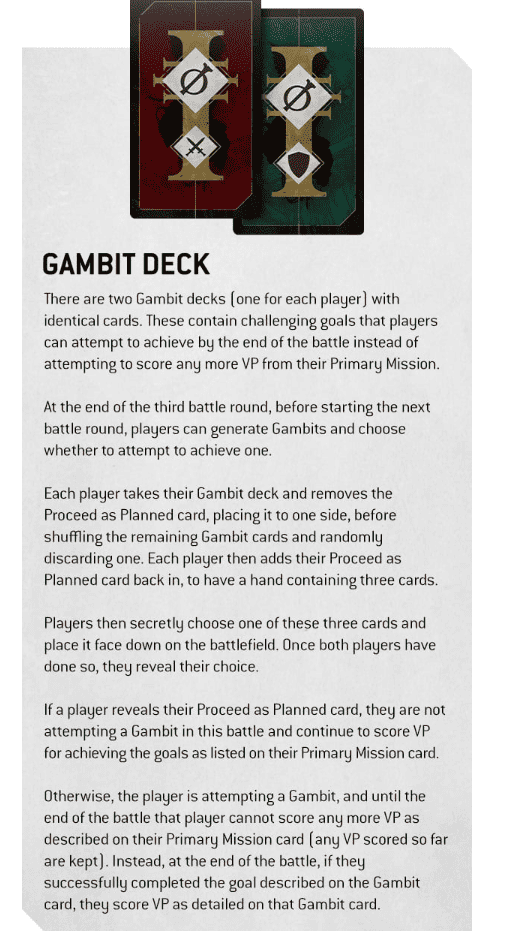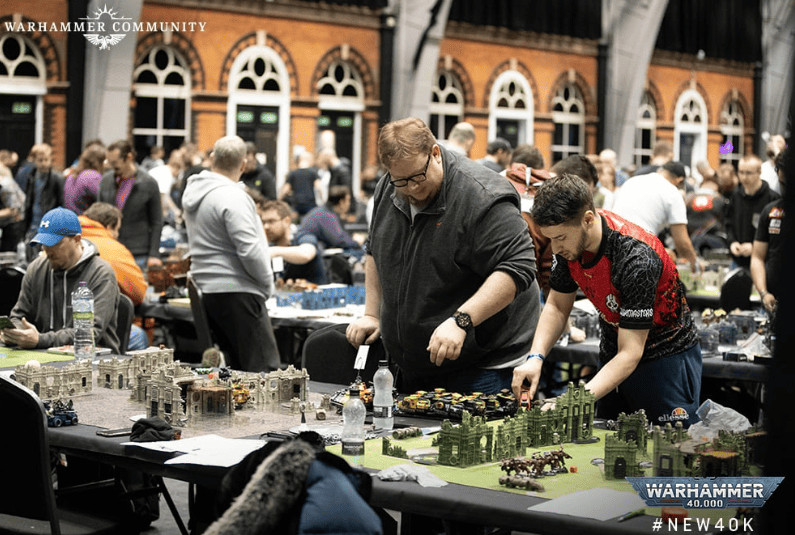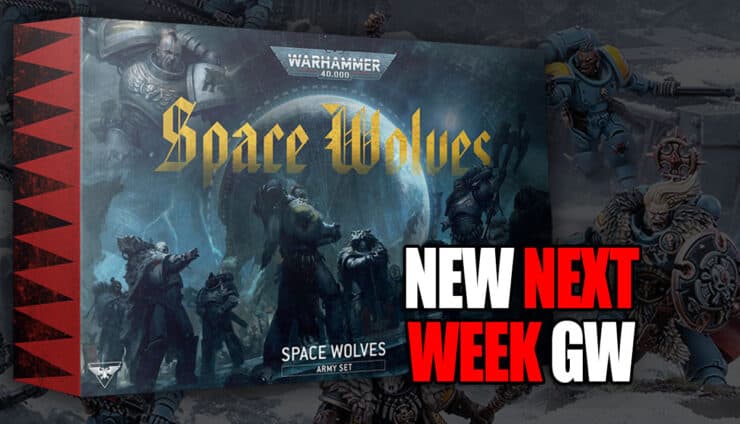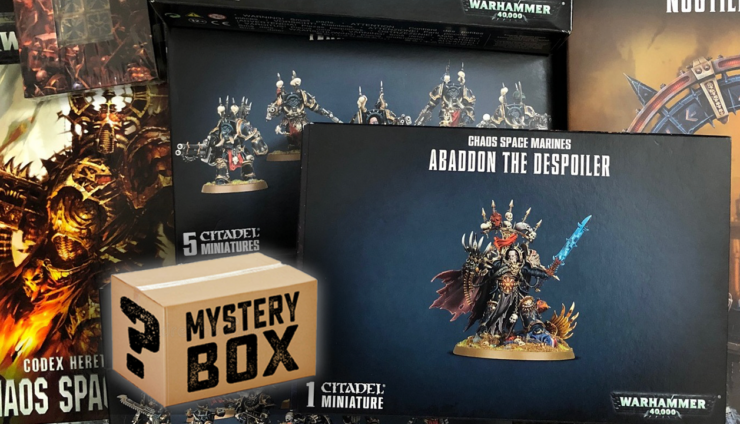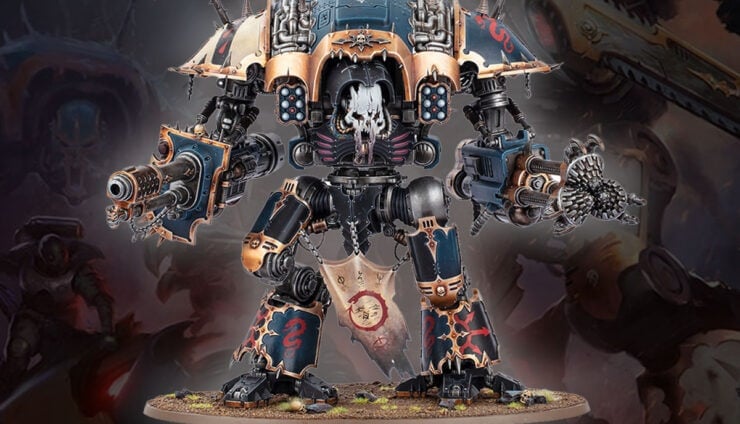 GW just dropped more new 10th Edition 40k rules For Missions (Primary and Secondaries), Objectives, GT Packs, and Gambit Cards!
GW just dropped more new 10th Edition 40k rules For Missions (Primary and Secondaries), Objectives, GT Packs, and Gambit Cards!
10th Edition 40k will be revamping the structure of how missions actually work. We’ve already seen the basics of how missions will work and what the new rulebook will have in it, which you can check out here. This time around, they are focusing more on Primaries, Secondaries, some Stratagems, and when you should actually play your Gambit cards.
They say the new edition will also have tournament packs on day 1, which is good because some tournaments are taking place right near the start of the new edition.
Click the links below for the latest on 10th Edition Warhammer 40k and the full articles!
- Warhammer 40k New 10th Edition Release Guide: LATEST
- New 10th Edition Warhammer 40k Starter Set
- What Will Happen To Codex Books in 10th Edition
- All the Latest 10th Edition Rules Changes
- New Leviathan 10th Edition 40k Starter Box Set Value Is Hot Fire!
- How to Build Army Lists in 10th Edition Warhammer 40k
Now, let’s jump into the new rules!
GW Reveals More 10th Edition 40k Rules For Missions, Objectives, & Gambit Cards
The new rules come from Warhammer Community.
There are nine different Primary Missions in the deck. Some resemble tried and true objectives from the current edition of the game, while others are radically different. Coupled with five different Deployment maps and 12 different Mission Rules, this creates a wider variety of exciting game options right off the bat.
You can score up to 50 Victory points per game from your Primary Mission – more than any other single source of VP – making it the key to triumph no matter what other cards you draw.
Take and Hold is pretty common, but it’s nice to get five different maps and 12 different mission rules right off the bat. Now, you can score 50 VP for your primary, so you better get an army good at it!
New Secondaries in 10th Edition 40k
In every game, you and your opponent both have identical decks of 16 different Secondary Missions. All of these can be played as “Tactical” Missions – meaning you’ll use the whole deck and draw two Secondary Missions at random. These must be then replaced with new randomly-drawn cards as they’re completed throughout the battle.
Alternatively, seven of these Secondary Missions can also be played as “Fixed” Missions – meaning you’ll select two specific cards and stick with them the entire game. Fixed Missions are perfect for armies who prefer to pursue their own battleplan, while Tactical Missions are more random – and therefore riskier – but will reward flexible armies that can adapt to the tides of war.
Regardless of whether they’re using Tactical Missions or Fixed Missions, players can score a maximum of 40 Victory points from Secondary Missions. Fixed Missions players can only score 20 Victory points from each of their two individual Secondary Missions, so they can’t afford to neglect either.
It’s also interesting because you can have one player randomly pick missions and the other play with fixed missions. At most, you can score 40 from them.
Meanwhile, players using Tactical Missions will discard each card the moment they achieve that Secondary Mission, and only replace discarded cards in their next Command phase – meaning you can’t cycle through your whole deck and hit 40VP in one extremely lucky turn. There are other ways to discard unfavourable Secondary Missions, but they’re limited and have their own cost – if you can, it’s better to play the hand you’re dealt…
This is good because you can’t score everything in a single turn. So if you do want to discard a card, make sure it’s one you can basically never achieve, as you can only pitch one the entire game (well, with this Stratagem at least)!
You don’t have to spend a Command point to ditch a tricky Secondary Mission, however – at the end of each of your turns, you can discard one or more Secondary Missions and gain a Command point. You’ll be giving up on the chance to score that Secondary Mission, and won’t draw a replacement until your next Command phase, but you won’t be stuck with cards you can’t or don’t want to score.
This is pretty interesting because if you like your secondaries, you don’t actually get a CP, so a bit of a factor as to what your army really needs at the time.
How Gambits Work in 10th Edition 40k
Gambits have been designed with both competitive and casual play in mind to offer players a challenging do-or-die Hail Mary. At the end of the third battle round, players can totally abandon their Primary Mission, and instead select one of two randomly drawn Gambits.
In the current edition of the game, it isn’t uncommon for a game to be very close and hotly contested – but due to the nature of progressively scored Victory points, for one player to be mathematically out of reach only halfway through. This can be quite disheartening – whether you’re a competitive player facing a foregone result, or a casual player rolling out a futile struggle after days or weeks of getting hyped for your upcoming game. Gambits are designed to solve these problems – without creating a situation where a totally outplayed army gets lucky just by rolling a 12.
If you complete battle round 3 – a little over halfway through – and find that the game is very close but just out of reach on the Primary Mission, you can telegraph to your opponent that you’re going to abandon the Primary Mission and aim for a long shot. Of course, this will give them the opportunity to stop you from achieving your Gambit – and they’ll have two whole rounds to prevent the completion of your risky new gameplan.
Should you succeed in your Gambit, you’ll score 30 Victory points – but crucially, this reward is still limited by that standard cap of 50VP per game from the Primary Mission. If your opponent is running away with the game – and keeps running, since they can still score the Primary Mission perfectly well for the next two rounds – then a desperate Gambit won’t let you win all on its own. Even then, however, it can offer an exhilarating sidequest to pursue as a narratively fulfilling way to finish out a lost battle.
We’re still a little on the fence about these, but for casual play, we actually think they are enjoyable. Because who doesn’t want to pull out a last-second victory against your buddies? For the tournament scene, it could be a fun way to keep games much closer and actually allow for some more variety in play at most levels.
GT Packs
For tournament organisers, there will be a digital and routinely updated GT pack from Day 1 of the new edition. This will include suggested combinations of Deployments, Primary Missions, and Mission Rules for typical tournament play, using the Leviathan card decks to pre-generate these shared parts of the game so all players at the event are playing the same mission.
This pack will also include an organisers’ commentary, tuned to provide new event organisers with some good starter tips, without any overly prescriptive elements that might infringe on the well-established best practices of the amazing global community of TOs.
It’s nice to see they will support GTs and tournaments from the beginning.
Check out the latest Warhammer 40k rumors for the rest of the 9th and even 10th Edition, new releases, and more!
Here’s the most up-to-date list of new Games Workshop bits from preview models that we should watch out for. Click on the gallery above to see dozens of Rumor Engines with new models still to be revealed!
- New Primaris Space Marines 40k Rules & Minis
- Warhammer 40k 10th Edition Rules & Rumors
- Even More Warhammer Going For Super Cheap on eBay
- Latest New JOYTOY Action Figures & Discounts for Warhammer 40k
- Get 40k RPG Books & Black Library Cheap On Humble Bundle
All the Latest Warhammer Rules & Model Rumors
What do you think about the new Warhammer 40k 10th Edition missions, primaries, secondaries, and gambits?
Let us know in the comments of our Facebook Hobby Group, and make sure you enter the latest monthly giveaway for FREE today!
Get ad-free access to our hobby videos, a monthly crate of miniatures, and support some of the best creators out there for as little as $6 a month on Patreon!
